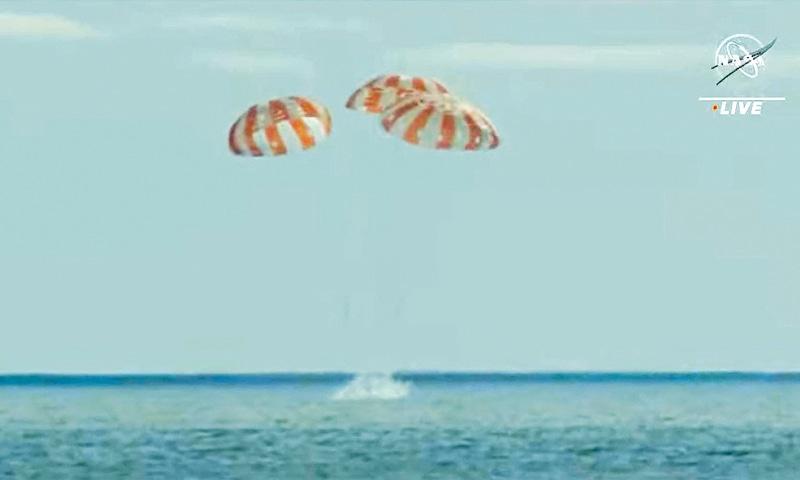NASA’s Orion capsule has splashed down in the Pacific Ocean after completing an uncrewed journey around the Moon, winding up the opening mission of the US space agency’s Artemis lunar program after Apollo’s final Moon landing.
The unmanned Orion spacecraft, carrying a simulated crew of three sensor-equipped mannequins, sank into the water off Mexico’s Baja California peninsula at 9:40 a.m. Pacific Standard Time (17:40 GMT) on Sunday, completing a vital demonstration of how future lunar astronauts will safely return to Earth.
When it shed its command module, it took a 20-minute descent at 39,400km/h into Earth’s atmosphere, exposing a heatshield that reached peak temperatures of over 2,760 degrees Celsius.
“From Tranquility Base to Taurus-Littrow to the tranquil waters of the Pacific, the latest chapter of NASA’s journey to the Moon comes to a close. Orion, back on Earth,” said Rob Navias, a NASA commentator on a live stream.
Around two weeks ago, the capsule reached its farthest point in orbit, approximately 434,500km (270,000 miles) from Earth.
The Orion mission, launched from the Kennedy Space Center on NASA’s new giant Moon rocket on November 16, started Apollo’s successor program, Artemis. The project’s goal is to return astronauts to the Moon’s surface this decade and create a long-term presence there as a stepping stone to future human exploration of Mars.
The essential element of Orion’s voyage was re-entry, which tested whether its newly constructed heat shield could endure atmospheric friction and adequately protect the astronauts on board.
“It is our priority-one objective,” NASA’s Artemis I mission manager Mike Sarafin said at a briefing last week. “There is no arc-jet or aerothermal facility here on Earth capable of replicating hypersonic re-entry with a heat shield of this size.”
Although no one was on the $4 billion test flight, NASA officials were overjoyed to complete the dress rehearsal, especially after years of flight delays, financial overruns, and technical faults.
The next Orion flight around the Moon is scheduled for 2024, with four astronauts onboard. Following that, a two-person lunar landing might occur as early as 2025.

